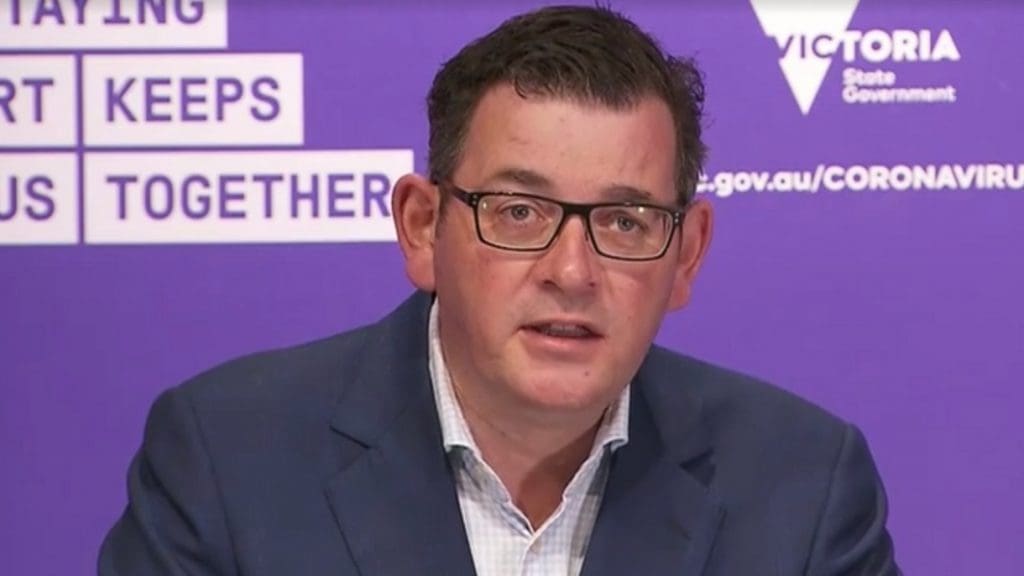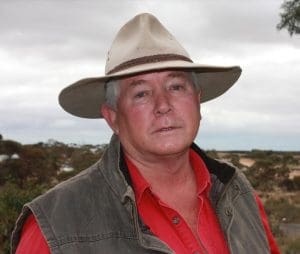
Victorian Premier Daniel Andrews’ government is being urged to relax red meat processing workforce restrictions.
VICTORIA’S peak livestock farmer body and red meat processors are seeking equivalence with the chicken industry in any revision of COVID-19 workforce restrictions.
Sheep Central has been told the Victorian Farmers Federation’s Livestock Group is supported by the Australian Meat Industry Council in seeking an easing of current Stage Four workforce restrictions for processors as part of the state’s COVID-19 recovery road map.
Victorian Premier Daniel Andrews on September 6 will outline the state’s road map out of the Stage Four restrictions, which have included the imposition of a 33 percent cut in peak workforce levels and improved workplace practices at red meat processors to minimise virus infection risks and spread.
Mr Andrews has refused to detail what processors can expect after Sunday, but has said there would be no return to pre-COVID practices, although the government wanted “to get as many workers back to work as quickly as we can.”
“But it has got to be done safely and it has got to be done based on the expert advice about what can be done at what speed and still maintain control.”
He has said road map decisions would be based on case numbers, data and science, “and the very best of medical advice provided by our expert public health team.”
A Victorian Government spokesperson said: “We know every Victorian wants certainty about the future – for them, for their family and for their work.
“By the end of the week, we will lay out a plan to re-open our state.”
Sheep Central has been told the VFF and AMIC are among many groups Victoria’s Minister for Agriculture Jaclyn Symes is meeting with to discuss industry needs ahead of the reopening plan being laid out on Sunday.
Click here to get Sheep Central story links sent to your email inbox.
Limited processing capacity concerns
However, Victoria’s lamb producers and the processors are concerned that maintaining workforce levels at 67pc of peak workforce levels will limit processing capacity during the spring turn-off of lambs, cutting saleyard competition, producers’ returns and exports.
The producers and red meat processors are seeking an easing of the restrictions to 80pc peak workforce levels as was granted to the chicken processing sector a month ago.
A Victorian lamb processor told Sheep Central this week that continuing the workforce conditions would be very challenging for the industry.
“If they leave these restrictions in place and the farmers keep sitting on their lambs because the price has come back or there is not enough competition, all of a sudden when you get the first week of hot weather and the feed goes off there are going to be lambs everywhere and no-one to process them.
“It will cause an issue,” the processor said.
“Whereas it could be deemed that true market value would be 600-650c/kg for lambs, but if there is an oversupply of them come mid-October onwards leading into Christmas, the market rate might be more around 400c/kg.
“There is a very real chance that could happen.”
The pressure was already coming off supplies, with large numbers of lambs already booked in for slaughter, the processor said.
“We like to keep that competitive tension in the market, but really there is no need to.”
Victorian sheep meat sector at risk

VFF Livestock Group president Leonard Vallance
Victorian Farmers Federation (VFF) Livestock Group president Leonard Vallance said Victoria produces almost half of Australia’s sheep and lamb meat and there are currently concerns about the viability of processors and producers.
“Farmers have battled bushfire, drought and now COVID-19.
“Many producers were looking forward to one of the best seasons in years, but now face an uncertain immediate future as the spring peak approaches,” he said.
“There is an urgent need for a sensible, risk-based approach to evaluating processing facilities.
“Some processing facilities already have the infrastructure and the internal procedure capabilities to implement COVID safe practices,” Mr Vallance said.
“We’re calling for these facilities to operate at least at 80 percent capacity to manage the influx of spring lambs.
“We have producers who receive their yearly pay check from large consignments of lamb in the spring time who are anxiously waiting to see a commitment to work with industry,” he said.
“Farmers just want to continue farming at the end of the day and are confident they can do so in a COVID-safe way,” Mr Vallance said.
Northern Victorian first cross ewe breeder and prime lamb producer Chris Wallace-Smith said there was a serious grass seed risk to lambs if they were unable to be processed this year.
“We’ve got a shearer shortage out there and the season is going to turn, and we all know what is going to happen to carcases; they are going to be pitted with grass seeds.
“So it is going to devalue the lambs and it’s going to cost the producers even more money,” he said.
“We are coming up to the biggest time of the year in terms of lambs being processed and producers need to get them off for cash flow.
“They also need to be in control of their finances for the next 12 months – this is putting everything into jeopardy.”

HAVE YOUR SAY